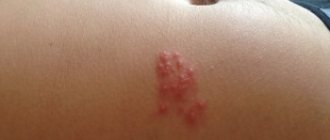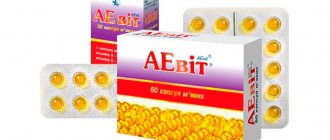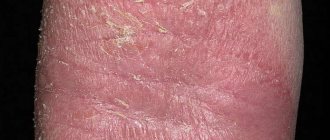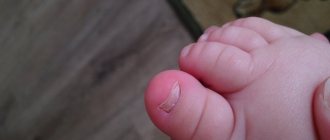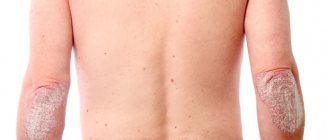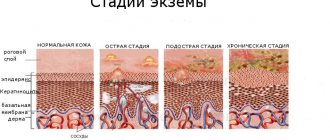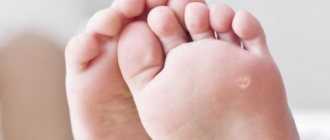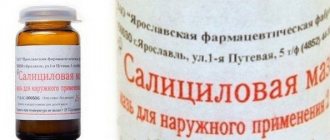Let's look at the main types of rashes
Rashes of non-infectious origin are: prickly heat (small rash in the form of fluid-filled blisters. Minor redness is possible at the sites of appearance. They can develop into purulent rashes as a result of infection. Localization is forehead, nose, space under the lower lip and behind the ear), hormonal acne (may appear in infants due to the high content of the hormone estrol in the mother’s body.
As a rule, such rashes appear on the nose and disappear during the first two weeks of the child’s life), white pimples on the face (appear due to improper functioning of the sebaceous glands or their immaturity. Mainly common among infants up to six months), and allergic rashes (red spots with a small rash, accompanied by itching).
Infectious rashes: 1) Scarlet fever: a scarlet rash that appears not only on the face, but also on the throat and other parts of the body. The skin becomes like sandpaper and dries quickly. A sharp increase in temperature to 39 degrees is also characteristic. 2) Chicken pox: small rashes on the face with a reddish rim and watery contents.
The appearance of acne is preceded by redness of the skin. The disease is accompanied by itching, the child refuses to eat, fever, nausea, weakness and severe itching. 3) Herpes: a large number of blisters on reddened skin. Before the rash, the temperature may rise, weakness may appear, and the skin may become sensitive.
Why might a child develop a rash on his face?
There are a lot of diseases that are accompanied by a rash. In order to distinguish them, you need to take into account the nature of the rash: color, size, dynamics of manifestation. The accompanying symptoms cannot be ignored. All rashes can be classified into 2 groups:
- primary - affecting healthy skin;
- secondary - appear as the primary develops.
The table shows the most common primary rashes:
| Appearance of the rash | Cause | Associated symptoms |
| Small red pimples. The boundaries are unclear, the rash appears in the form of clusters that can merge into one spot. | Allergy | Itching, drowsiness, bad mood, slight fluctuations in body temperature. Sometimes - redness of the eyes, runny nose. |
| “Mosquito bites” are pinkish or red pimples. They have a pronounced center surrounded by a border. The boundaries are clear, the number is gradually increasing. | Infectious diseases (measles, rubella, scarlet fever, etc.) | Severe increase in body temperature, chills, itching. |
| Rashes in the form of blisters filled with cloudy or white liquid. | Herpes | Severe pain in the area of the rash, increased body temperature (from 37.3 to 38°C). ARVI symptoms are often associated. |
| Watery pimples with a blackhead in the center. At first they appear in the form of compactions, but gradually become softer. | Molluscum contagiosum (we recommend reading: what molluscum contagiosum looks like in children: photo) | None. Rarely - itching. |
| Pink spots with purulent accumulations in the center. | Streptoderma (more in the article: effective treatment of streptoderma in a child) | Febrile fever, general intoxication of the body, enlarged lymph nodes. |
| White pimples on the mucous membrane of the mouth or around the lips (we recommend reading: why do rashes appear around a child’s mouth?). Accompanied by a cheesy coating. | Candidiasis | Burning in the affected areas, loss of appetite. |
| Small red pimples that appear after overheating. | Prickly heat | None. |
READ ALSO: Acne due to problems with the intestines and stomach - causes of appearance and methods of treating the face
Why rashes appear: physiological and pathological sources
Often the cause of a physiological rash on a child’s forehead is an allergic reaction to a certain external irritant. For example, it could be:
- any food product (nuts, apricots, chocolate, oranges, etc.);
- pet hair;
- synthetic fabric for casual wear;
- any cosmetic product (cream, gel, lotion, etc.);
- detergent;
- medicinal product, including antiseptics;
- plant pollen;
- No less rarely, children develop allergies to sunlight, wind or cold;
- a bite of an insect.
Rash on forehead
In such cases, small pimples appear, and less often, blisters, the contents of which are liquid. After opening them independently, symptoms of irritation on the skin are observed, namely, redness and itching.
Also, the skin on the forehead may peel, swell, and acne, spots, and blisters often form on it, which indirectly indicates the development of contact dermatitis, eczema, urticaria, neurodermatitis and other diseases.
Other sources of rashes on the skin of the forehead include:
- the development of a disease of one of the organs such as the liver, gallbladder, pancreas;
- pathologies of rheumatoid etiology;
- hormonal imbalances;
- endocrine diseases;
- pathologies of the digestive tract;
- helminths present in the body; skin diseases;
- low-quality products that the child eats.
As for newborns, rashes on the forehead often occur for physiological reasons. For example, one of these is the individual reaction of the body to the consumed formula or breast milk.
Due to the fact that during lactation all the vitamins and microelements contained in the food consumed by the mother are transferred to the child, her diet should be complete and healthy.
At best, a woman should adhere to a certain diet:
- with the exception of fatty, fried, salted, smoked foods;
- with limited consumption of allergic foods: chocolate, citrus fruits, red vegetables and fruits, nuts, sweets, condensed milk, honey, etc.
It is also important to introduce complementary foods correctly, starting with a small volume of a particular product, gradually increasing if an allergic reaction is not observed.
What is acne
Acne is an inflammatory skin disease characterized by pathological changes in the hair follicles or sebaceous glands.
As a result, the pores on the skin of the forehead become clogged, and inflammatory processes begin to develop.
The forms of acne are varied and are directly dependent on:
- immunity status;
- age;
- presence of diseases in the anamnesis.
The sebaceous glands produce oil to prevent the skin from drying out.
It serves as a means of preventing chapping, frostbite, and protects the epidermis from exposure to ultraviolet rays.
But after the appearance of provoking factors, the protective mechanism fails.
Acne is a chronic inflammation of the sebaceous glands and surrounding tissues.
Sebum accumulates in the mouths of the hair follicles, becomes infected, matures and breaks out.
This is a real disease that requires adequate therapy.
The forehead belongs to the part of the face with increased fat content, conventionally called the T zone.
The fact is that there are a large number of sebaceous glands located here (at least 500 per 1 square cm), which produce a special secretion - sebum.
Many glands are also located on the chin, wings of the nose, and the bridge of the nose.
Excessive oily skin, sweat, dirt and particles of dead epidermis create excellent conditions for the growth of bacteria on the surface of the forehead.
This whole mass clogs the pores, and microorganisms provoke inflammation and purulent rashes appear.
Everyone knows that a good appearance increases self-confidence. When a clean, beautiful face looks at you from the mirror in the morning, you are charged with a good mood and are convinced of your own irresistibility, which subsequently helps you cope with what the coming day brings, no matter what unpleasant or unexpected surprises it may present.
Confidence smashes all barriers like a hammer; sometimes all that is needed to solve a problem is a well-timed smile to the right person.
In order to use this product with full right, you need to convince yourself every day that you meet the criteria of beauty. Knowing this helps you move through life with ease, knowing that your beauty is undeniable.
But there comes a time when in the morning you see not the clean skin you are used to, but skin with small rashes or large pimples on the most noticeable part of the face - on the forehead.
The first thing you think about is how to get rid of an unexpected problem. You may have already tried many remedies, but sometimes it is not so easy to remove pimples on your forehead. The reasons for this phenomenon in women can be extremely different, and relief varies, depending on what caused the problem.
The most common causes of forehead rashes in men are poor hygiene and poor diet, as well as smoking and drinking alcohol.
Bad habits combined with an unhealthy diet lead to liver failure.
The organ cannot cope with the large volume of incoming toxins, which is reflected on the skin.
Colorless rashes
Small colorless rashes that resemble nodules are called neonatal acne. Neonatal cephalic pustulosis appears on the face of children during the first month of life. This is how the baby’s skin reacts to the remnants of maternal hormones. No specific treatment is required - the baby will soon adapt to new living conditions. Acne usually goes away on its own within a few days, weeks or 1 year.
Colorless or flesh-colored watery pimples on the cheeks in later life may indicate a malfunction in the immune system: this is how a food allergy or reaction to emotional stress manifests itself. This phenomenon is called dyshidrosis. In emotionally stable children, it goes away on its own; otherwise, therapy is required, including the use of weak sedatives.
What to do with allergic urticaria on the face?
The cause of this phenomenon may be much more serious health problems. The body gives a signal in various ways, and hives are one of the cries for help from a certain organ. Rashes on the face can be a manifestation of an allergic reaction, and in order to distinguish them from other diseases, you should pay attention to the following points: Facial rashes can be confused with regular acne, but if they are the result of an allergic reaction, you should consult a doctor immediately. The disease may appear over several weeks or disappear within a couple of days. It all depends on the sharpness of the form.
A disease characterized by a sudden widespread eruption of itchy blisters surrounded by a zone of hyperemia.
.
VIDEO ON THE TOPIC: Urticaria in adults and children. Causes, symptoms, photos (part 1)
Hormonal disorders
In case of hormonal imbalance in the body, acne appears due to an excess or lack of certain hormones. In this case, washing with hygiene products will not save the situation; restoring hormonal levels will help.
https://www.youtube.com/watch?v=G0-chkbvtW8
Causes of rash in women:
- bearing a child;
- lactation;
- abortion (hormonal surge due to enormous stress in the body preparing to bear a child);
- premenstrual syndrome associated with hormonal changes;
- menopause;
- endocrine diseases;
- pathologies of female genital organs;
- sexually transmitted infections.
Men suffer from the development of acne due to surges in the testosterone hormone. The rash occurs both from its excess and from its deficiency. The reasons for the failure are:
- pituitary tumors;
- injury or inflammation of the testicles;
- renal failure;
- pathologies of the thyroid gland;
- diabetes.
Hormonal pimples
The medical definition of such pimples is acne of newborns or neonatal cephalic pustulosis. The reason for their appearance immediately after birth is a hormonal crisis - hormones from the pituitary gland, placenta and ovaries enter the fetus’s body in the last months of its intrauterine development from the mother. When there are too many of these hormones, small pimples appear on the baby’s skin.
The natural question that parents have is whether they are dangerous, contagious, and whether they need to be treated? The word “hormonal” scares many, but the famous pediatrician Evgeniy Komarovsky explains that such pimples on a baby’s face do not pose a danger. You cannot become infected with them and there is no need to treat them - after some time (usually 1-3 months) they will go away on their own.
Diagnostics
First of all, you need to make sure that the rash on the forehead is a symptom of an allergy, and not prickly heat or another disease with similar symptoms: rubella, chickenpox, dermatitis, etc. It is necessary to show the child to a pediatrician; based on a history and examination of the patient, he will make a preliminary diagnosis. You may also need to consult an allergist, dermatologist and immunologist.
Depending on the medical history, children may be prescribed:
- blood test for the presence of immunoglobulin E;
- ultrasound examination of the abdominal organs to exclude diseases of the liver, pancreas and gall bladder;
- blood test for the presence of parasitic organisms;
- stool analysis for dysbacteriosis;
- allergy tests.
The last group of studies includes:
- Skin tests. Several types of allergens are applied to the patient’s skin in the form of drops/applications or they are injected subcutaneously as an injection or with a special device; a scratch can also be made with a scarifier. If swelling or redness appears after a while, the irritant is considered identified.
- Provocative test. It is prescribed if previous studies have not helped to establish the cause of the allergy or the result is inaccurate. A small amount of the allergen is injected under the tongue, into the nose, or directly into the bronchi and the patient’s reaction is monitored. The study is carried out exclusively in a hospital setting and under the supervision of a doctor, since strong reactions are possible.
Allergy tests are not performed on young children due to their danger. Some allergists do not recommend doing them before 5 years of age, since at this age the child constantly undergoes changes in the body, including changes in the response to various substances.
Therefore, the elimination method is recommended for children with allergies. It involves the sequential exclusion of potential allergens, including food ones. Then they are brought back into the child’s life again, while his reaction is constantly monitored.
Allergy in the forehead area
The appearance of allergies on the forehead can be triggered by various factors, one of which is the body’s rejection of internal and external irritants.
To treat any allergy, it is necessary to identify the causes that provoke the development of the disease. When acute symptoms develop, allergens can be food, clothing, the presence of animals, etc.
In children, the causes of a rash on the forehead arise due to the insufficient development of the immune system, when the child’s body is not able to cope with the attack of allergens.
As a rule, a rash in the forehead reflects a malfunction of the patient’s internal systems, indicating a pathological process. The rashes vary in appearance, number and severity.
Classification of rashes
- A rash in the forehead area is most often accompanied by severe itching, but sometimes it can occur latently, without acute symptoms. It comes in red, white, purple or silver. As a rule, the appearance of rashes is accompanied by dermatitis and inflammatory diseases.
- According to their structure, rashes on the forehead can be flat, embossed, scaly and uneven. In the form of spots, dots, spreading over different parts of the body. In addition, it can peel and flake off.
- In severe cases, an allergic rash on the skin of the forehead may be accompanied by swelling of the facial area and tongue, and difficulty breathing. This condition is very dangerous for the patient and is called anaphylaxis. If such symptoms appear, emergency treatment is required.
- If the rash on the forehead is characterized by purple spots, accompanied by fever and stiffness of the neck muscles, it is necessary to exclude the development of bacterial meningitis in the patient.
Causes of rash in adults
The main cause of a rash on the forehead is an allergic reaction.
Sometimes such symptoms are not associated with allergies and can result from disturbances in the functioning of the pancreas and liver. Often a rash appears with rheumatoid diseases.
In this case, allergens can be both food and animals, and clothing. Therefore, if a pinpoint hyperemic rash on the forehead is detected, a mandatory consultation with an allergist is necessary.
Of no small importance is the genetic predisposition to allergies, both the general reaction of the body and increased sensitivity to a specific allergen.
In patients, rashes on the forehead are possible after contact with local antiseptics. In this case, it is necessary to eliminate the causes of the allergy. In addition, it is strictly not recommended to remove the rash on the forehead using physical methods. This can lead to infection and worsen the situation, especially in a child.
The causes of the disease may appear due to hormonal disorders, dysbacteriosis and malfunctions of the liver, pancreas and gall bladder.
In addition, errors in diet can provoke rashes. In this case, it is necessary to review the diet, excluding highly allergenic foods (coffee, tea, chocolate, sweets, etc.). It is preferable to choose a drink in the form of freshly squeezed juices, mineral or ordinary distilled water.
Causes of rashes in children
In infants, allergies can appear suddenly and a similar manifestation in a child can be provoked by both external and internal factors. Any appearance of a rash (especially in the forehead area) requires finding out the cause of the disease in the infant.
In a newborn baby, an allergic rash may appear as a result of an allergy to mother's milk if the woman's nutrition is impaired. Food allergies are one of the most common causes of forehead rash.
The skin of a newborn is very delicate and susceptible to external influences, so a baby may develop an allergy to synthetic items from which clothes are made.
In addition, allergies can occur upon contact with washing powders, baby detergents, animal hair, etc.
In this case, it is necessary to switch to hypoallergenic cosmetics, completely eliminating contact with allergens.
Quite often, pinpoint hyperemic rashes in infants can occur due to prickly heat, when the surface layer of the child’s skin comes into contact with wet underwear for a long time, resulting in skin irritation.
In case of infectious diseases, a hyperemic rash on the baby’s forehead may be accompanied by an increase in temperature, lethargy of the child, refusal to eat, and increased drowsiness.
The occurrence of a rash in a child should alert parents. Red spots, flaky skin and irritation are quite easy to notice in a baby. In addition, the development of Quincke's edema (giant urticaria) is possible.
This condition is a serious complication that is observed quite rarely, but is quite difficult, especially for infants, and can lead to respiratory arrest due to swelling spreading to the larynx.
If this complication is suspected, the child must be hospitalized immediately.
Treatment
Any allergy requires specific treatment after mandatory consultation with an allergist and dermatologist. To obtain a positive result, the causes of the disease are first determined.
In addition to limiting interaction with allergens, drug therapy may be prescribed, consisting of the following medications:
First generation antihistamines (Tavegil, Suprastin, Diazolin) and the most modern antiallergic drugs with prolonged action (Claritin, Zodak). Treatment of infants is carried out strictly under the supervision of the attending physician.
Symptoms of the disease in a child must be neutralized with the help of a hypoallergenic diet, which is used in combination with the treatment of liver diseases, gall bladder and dysbiosis. Quite often, such diseases can cause an allergic rash on the forehead.
Enterosorbents have a positive effect in the treatment of allergic symptoms in adult patients and children. They are prescribed to remove toxic substances from the body that are formed as a result of exposure to an allergen. These include Enterosgel. Polysorb, activated carbon, etc.
In addition to antihistamines and enterosorbents, medications in the form of ointments and gels can be prescribed. These include Fluorocort ointment, Fenistil. In addition, glucocorticosteroids (hydrocortisone, prednisolone, etc.) may be prescribed. However, it should be borne in mind that the dosage is selected individually for adult patients and children.
Effectively relieves allergy symptoms with a product for external use - La-Cri. This gel neutralizes itching, skin hyperemia, swelling, flaking, promoting healing and restoration of damaged skin. Its advantage is its neutral effect on the baby's skin.
Home remedies for acne in children
To get rid of acne in children under 9 years of age, mild baby soap can be used to wash the baby’s face. You should not do this more than once a day, since excessive washing will cause irritation on the skin, and the work of the sebaceous glands will intensify, and the situation will worsen.
Do not use greasy creams on areas where your child has acne. Despite the apparent dryness of the skin, adding oil will make the sebaceous glands even more active, and the acne will become inflamed and there will be more of them.
When treating acne in children, you should never squeeze them, as this will not give a positive result, but will only make it worse. The skin becomes irritated when pimples are squeezed out, and the glands will begin to produce even more fat - the number of pimples will inevitably increase.
Be patient, as acne on the skin of children under 7-9 years of age goes away in most cases without outside intervention within a few weeks. If the acne-affected areas look very bad and your child feels discomfort, go to the doctor, who will prescribe specialized treatment.
Treatment
Minor rashes on the forehead or chin often do not require the use of antibacterial and anti-inflammatory drugs.
It is enough to adjust your diet and start using cosmetics suitable for this skin type. In all other cases, a more serious approach to acne treatment is required.
Medication
On pharmacy shelves there is a wide range of pharmacological drugs for the treatment of all forms of acne.
In this case, you will need to consult a dermatologist.
The following are used in acne therapy:
- external agents with antimicrobial and anti-inflammatory effects;
- products made according to recipes of traditional healers;
- drugs for systemic therapy;
- caring and health procedures at home.
Self-therapy often does not bring the desired results and leaves a serious hole in the family budget.
If acne on the forehead in men and women is the result of a disruption in the gastrointestinal tract, then their treatment with antibacterial drugs is for the most part impractical.
First of all, you need to review your diet, eliminate junk food, and provide the skin with proper care.
If these measures do not help, then therapy should be started immediately. After all, prolonged inflammation severely injures the epithelial tissue, as a result of which, after the rashes heal, post-acne scars, scars or spots remain.
Medicines
Don't be nervous if you have pimples on your forehead. After all, stress negatively affects the condition of the skin and can complicate the course of the disease.
At the initial stage, acne is treated with external pharmaceutical preparations:
- with azelaic acid (Skinoren, Azelik), which fight inflammation and dissolve sebaceous plugs;
- with benzoyl peroxide (Baziron AS, Benzacne) – relieve inflammation and dry;
- retinoids (Retin-A, Differin, Adapalene, Klenzit) – normalize the functioning of the sebaceous glands;
- Vishnevsky and ichthyol ointment - draw out pus and promote the resorption of large cones.
READ MORE: Trichopolum for thrush in women reviews
Acne treatment begins only after examination by a doctor. If it does not reveal significant violations, then dealing with neoplasms will not be difficult. For pathologies of the gastrointestinal tract and hormonal imbalances, therapy for the underlying disease will be required.
To eliminate the rash, you need to normalize your diet and drinking regime. You need to drink at least 1.5 liters of water per day. It is important to drink a glass of liquid on an empty stomach in the morning.
It is imperative to lead an active lifestyle and walk in the fresh air. Walking is especially necessary to saturate cells with oxygen. Also, the body must rest at least 8 hours a day.
Medications
Not all rashes can be eliminated by normalizing your diet and lifestyle. Sometimes patients need to use medications.
To eliminate many small pimples on the forehead once and for all, it is necessary to use comprehensive treatment along with preventive measures. External treatments alone or taking any pills alone will not completely get rid of the problem.
At least this approach will not be able to eliminate the problem completely; sooner or later a relapse will occur. The main part of therapy will depend entirely on the cause, which is determined during diagnosis.
If an allergy is detected, then it is necessary to take a course of antihistamines, and at the same time limit contact with the allergen or remove such a product from the diet. In the case when a gastroenterologist diagnoses a disease of the gastrointestinal tract, then drugs are prescribed whose action is aimed at restoring the functioning of internal organs.
In such cases, self-medication is out of the question. After all, any pathology without adequate treatment will progress, constantly provoking consequences, including in the form of systematic rashes on the face.
Along with the use of medications to combat the main pathology, the doctor is most likely to prescribe the following drugs:
- antibacterial agents (Azithromycin, Ciprofloxacin, Erythromycin, Amiksin);
- complexes of vitamins and minerals with the obligatory content of copper, zinc, selenium and brewer’s yeast;
- antiprotozoal drugs that effectively eliminate protozoa (Ornidazole, Metronidazole);
- with a lack of sex hormones in women - estrogen;
- for pathological severe inflammatory processes on the skin - systemic retinoids (Roaccutane, Isotretinoin);
- ultraviolet irradiation, galvanization, cryotherapy, ozone therapy.
It is not recommended to do it yourself at home, as there is a high risk of infection. The beauty salon provides all the nuances, which makes the procedure not only effective, but also safe.
Diseases
Pimples on the forehead often indicate existing diseases of the gastrointestinal tract, liver and gall bladder.
- Due to impaired absorption of nutrients and their metabolism, immunity decreases and the body cannot cope with pathogenic bacteria. As a result, rashes appear on the forehead.
- The work of the liver is to cleanse the blood of foreign substances (poisons, allergens, toxins), replenish and preserve vitamin B12, A, D, synthesize enzymes and some hormones, and form red blood cells. When the liver does not function well, toxins accumulate in the body, which immediately affects the skin.
- Another internal reason for the appearance of acne on the forehead is hormonal changes. Especially often, for this reason, rashes appear in adolescents and women during pregnancy or before menstruation.
- Allergy is also the reason why the forehead is sprinkled. To remove such acne, it is enough to detect the allergen and eliminate it.
The diet determines the condition of the skin.
Fatty, spicy, salty, fried and smoked foods, as well as an excess of sweets, soda and fast food on the table spoil not only your figure, but also your skin.
foods that cause increased sebum production
Overeating, as well as strict diets, lead to the appearance of many small pimples (look like a rash) on the forehead.
- Fiber acts like a brush on the intestines, cleansing it and maintaining normal microflora balance. It is found in vegetables and fruits, cereals. You can add fiber purchased at a pharmacy or store to ready-made dishes. This will not only tidy up your skin, but also ensure a slim figure.
- The optimal amount of vitamins and microelements in the diet will allow the organs to function harmoniously, which will ensure the beauty of the skin.
- Water helps remove waste and toxins from the body; sufficient consumption makes the skin more elastic.
Small pimples appeared on the forehead like a rash
The frontal part of the face is most susceptible to various factors. This area is also a kind of marker of pathologies within the body. Therefore, a rash on the forehead may indicate both a negative effect on the skin and diseases of certain organs and systems.
Causes of the rash
The causes of a rash on the forehead can be different. Doctors identify the main factors that provoke the appearance of skin rashes. They can have both endogenous and exogenous origin.
Impaired functioning of the skin glands
A large number of sebaceous and sweat glands are concentrated in the forehead area of an adult. Their ducts are necessary for removing sweat and sebum, which covers the skin in order to protect it from harmful influences.
With normal functioning of the glands, the process has no special features. But in case of excessive secretion production, clogging of the ducts and accumulation of fat inside them is observed. Therefore, men and women may notice small white nodules on the surface of the skin.
If the ducts become clogged with desquamated epithelial cells, the skin becomes covered with comedones. This type of acne is characterized by black dots inside the formation.
The affected areas are the most susceptible to penetration by harmful bacteria. As a result of infection, purulent inflammation may develop. Then the formations become:
This is how acne forms, a common skin disease in teenagers and adults.
Small white nodules are the result of blocked ducts
Infectious rash
A rash on the forehead in an adult can be caused by a viral infection of the body. In this case, large bright red elements are formed in the frontal zone, the diameter of which reaches 4 mm. A doctor can diagnose rubella. If the rashes are pinpoint, then measles is suspected. However, the latter most often manifests itself in childhood.
When affected by chickenpox, the rash is characterized by itching. They are bubbles that are localized in the area of hair growth. Chickenpox is not easy to identify until other symptoms appear.
Diagnosis of herpes zoster is also very difficult. It appears with delayed reactivation of the herpes virus in chickenpox. This situation is characterized by the appearance of a small blistering rash. The diagnosis can only be confirmed if there is further inflammation of the eyes.
Hormonal changes
If an adult over 25 years old begins to rash in the forehead area, then there is a significant reason to check the hormonal state. When testosterone increases in the body, sebum is produced in excess. At the same time, its density increases significantly.
Read more: Causes of rashes on the face
Due to its abundance and viscosity, the secretion cannot escape through the ducts. So he bottles them up. This creates the possibility of pathogenic microorganisms entering the affected areas.
If disorders occur in older women, we can assume:
- hyperandrogenism;
- polycystic ovary syndrome;
- dysfunction of the thyroid gland.
Therefore, the help of a doctor is mandatory.
Constantly occurring acne occurs during hormonal surges on the forehead and temples. Women may also notice changes before the onset of menstruation.
Allergic rash
A rash on the forehead may indicate an allergic reaction of the body to certain irritants. Most often, allergies are of a contact nature.
In addition to the formation of acne, you can note:
- peeling of the skin;
- peeling and cracks in the skin;
- crusts;
- itching
Urticaria and toxic-allergic diseases are characterized by papules and roseolas, which rise above the surface of the skin and merge into a single affected area. The skin becomes red due to the appearance of itchy erythema.
Itchy rashes are a symptom of allergies
Diseases of internal organs
The skin in the forehead area may become covered with a rash if the functioning of the gastrointestinal tract organs is disrupted. Based on the symptoms of the rash, one can assume certain diseases.
If blackheads, acne, or nodules form on the skin, the doctor can determine a decrease in stomach acidity.
If you have a rash in the hair growth area, you should check your gallbladder.
When the rash is located above the eyebrows, this may indicate a bowel dysfunction.
Dysbacteriosis can also affect the condition of the skin. In all of the above cases, treatment is carried out only by a doctor.
A rash on the forehead may indicate the presence of pathologies of internal organs
Violation of nutritional principles
With normal functioning of the gastrointestinal tract, acne may still appear. In this case, it is necessary to pay attention to the preparation of the diet.
If a rash appears, you should stop using:
Fast food, canned food, and smoked products are also prohibited. They significantly worsen the condition of the skin.
In addition, rashes can signal the body about a lack of vitamins. Therefore, it is necessary to introduce healthy foods, vegetables, and fruits into the diet.
Source: //dermatitoff.ru/na-lbu-poyavilis-melkie-pryshhiki-kak-syp.html
How to cure acne in a child?
Rashes of any nature except whiteheads and hormonal acne in infants require immediate treatment. Ways to combat acne depend on its origin. Sometimes you can cope with the means at hand, but in some cases self-medication can seriously harm your health.
It is better to entrust the treatment of infectious rashes to a specialist. In this case, you cannot do without consulting a doctor, as this may cause a deterioration in the child’s overall health. Do not forget that infectious diseases are contagious, so it is better to take action immediately and not delay treatment.
To get rid of prickly heat in children, you need to choose the right caring cosmetics. It should be baby powder or cream containing zinc. You can use decoctions of chamomile and calendula to treat damaged areas of the skin.
An allergic rash can be eliminated by changing the diet of the mother or baby. When you introduce a new product to your child’s diet, it is advisable to keep a special diary, noting the child’s reactions to certain foods. This will make it easier to find the allergen. You can start an online diary on our website - start a diary.
Remember that you should not squeeze a child’s pimples or use cosmetics for a different age group. Use only special children's cosmetics.
What are the types of acne in children?
Acne on the face and head of newborns, as well as in school-age children, varies, but they can all be divided into four categories:
- Open acne. The rashes are inflamed and filled with pus, and usually appear on the surface of the skin.
- Closed acne. They are located deep in the skin layers. Such acne on the face of newborns occurs quite often and disappears on its own.
- Purulent rashes are acne in a child over 3 years of age that appears due to staphylococcus.
- Watery red pimples in children about 7 years old indicate streptococcus has entered the body.
Open rashes are characterized by blisters that resemble herpes and chickenpox in appearance. Small red pimples in a 5-month-old baby are a sign of heat rash, and when the skin peels, it is atopic dermatitis.
Rash in newborns
The rash appears suddenly in a newborn. It can be either a primary reaction of the skin to an external irritant or a consequence of a disease. Therefore, the rash cannot be left unattended. It is imperative to understand the cause of its occurrence, in medical terms, make a diagnosis and then take action to eliminate it.
In this article we will look at the main types of rashes that occur in infancy. They can be classified in different ways: depending on the nature of their occurrence, location (face, neck, limbs, whole body), and the nature of the formed elements of the rash. We will look for the problem at its roots.
Hormonal rash
In the first 2-3 weeks after birth, the baby experiences a hormonal crisis, characterized by swelling of the genitals, mammary glands and skin rashes.
While female hormones are present in the baby’s body, the sebaceous glands, just starting their work, from time to time fail and produce large amounts of fat. As a result, a rash forms in newborns, located mainly on the forehead and cheeks. Sometimes it can be found singly on the neck and chest.
Other names for the rash are neonatal, three-week. They emphasize that this type is characteristic exclusively of infants in the first month of life. Pimples may vary in appearance.
The milia are mostly white (though in some cases they are red), and inside there is a thick clump like a white millet grain.
[/textbox]
This rash is also called acne, as it is somewhat reminiscent of pimples that appear in adolescence.
Rashes of this kind are not at all dangerous, they go away on their own
How to distinguish neonatal rashes from other types? We pay attention to 3 factors:
- the baby is feeling well;
- acne is mainly localized on the face;
- The rash appeared at 3 weeks of life.
Is there any treatment for this rash? It is not necessary. It goes away on its own within 2 weeks. The harm is expressed only in a spoiled aesthetic appearance, nothing more. But preventive care won't hurt. Why? The fact is that milia are not dangerous until the child accidentally scratches them. An open wound is a direct path for infection.
Care recommendations are as follows:
- trim small nails regularly (every 5 days);
- choose only clothes made from natural fabrics - this way you will avoid unnecessary and unnecessary friction on the skin;
- control the desire to squeeze pimples - there is a risk of infection;
- give the skin the opportunity to breathe by giving the child air baths for a few minutes;
- do not use hormonal and other ointments without a doctor’s prescription; if you really want to do something, wipe your face with chamomile infusion;
- If you have the slightest suspicion of a disease or if pimples grow, consult a doctor.
Heat rash and diaper rash
Miliaria occurs most often due to irritation of delicate baby skin. In infants, thermoregulation does not yet work properly, and if the child is chubby, and even dressed in a hundred clothes, redness in the places of the folds is guaranteed.
The rash is small, depending on the type of prickly heat, and may appear as individual nodules or as a continuous spot. In the initial stages it does not cause much discomfort and responds well to treatment. If nothing is done, prickly heat turns into diaper rash.
This is the most effective remedy for atopic dermatitis in children. When desperate parents have tried all the remedies, then only this ointment remains. Already on the second day after starting to use it, the rashes begin to decrease, and after a week and a half they disappear altogether.
This powerful effect is due to the fact that Advantan contains a hormonal component, methylprednisolone. This component allows you to achieve recovery in the shortest possible time. Unfortunately, with regular use it becomes addictive.
Treatment and prevention
Prevention and treatment of rashes in a child begins with eliminating the factors that provoke this condition. If the exact cause cannot be established, all known preventive and therapeutic measures must be taken:
- correction of nutrition for a nursing mother;
- for children over 2 years old - strict control over the diet;
- the frequency of hygiene procedures is increasing, they are performed according to all the rules with the obligatory use of creams, oils and powders;
- acne will go away faster if you add a decoction of chamomile, string or celandine to the water when bathing and washing;
- medicinal ointments (Bepanten, Desitin) and soft baby creams are used only as prescribed by a doctor.
ethnoscience
If the formation of acne in a teenager is periodic, then you can use folk remedies that have been proven over the years.
- Pimples on the forehead, a mask made from egg whites, whipped into a stiff foam, dries well. It can be left even overnight, thus eliminating redness.
- A folk remedy made from baking soda, which is slightly diluted with water, has an exfoliating effect and is applied to the face. You should not rub the mask on your face, just leave it on for 20 minutes, then rinse with warm water.
- It is good to fight white pimples with a potato mask. It is boiled and kneaded. Add a couple of dessert spoons of cream, an yolk and a little honey to the potatoes, stir thoroughly and apply to the face for 15-20 minutes.
Acne in children of preschool and school age
Acne occurs in a child aged 4 years and older quite rarely, but it still happens. Painful, inflamed, purulent acne can appear on the face in the cheeks, forehead and nose. The first stage of the formation of hormonal levels, sebaceous ducts and glands is far behind, so acne in a child over 3 years of age requires a thorough examination.
Observations by experienced doctors confirm that a rash on the face and pimples on the butt in a 3-year-old child are a consequence of hyperfunction of the adrenal cortex and overly active production of androgens. There are many causes of the disease, so parents need to rule out:
- miliaria;
- lichen;
- Itsenko-Cushing syndrome;
- problems with the adrenal glands;
- premature appearance of hair in the genital area and armpits;
- early puberty.
Tests to check the levels of hormones in the body can help identify the real causes of acne in children 7 years of age and older. The formation of pimples on the nose of a 7-year-old child or in other places is a reason to carefully determine the causes of the disease, since this is not just a cosmetic defect, but a symptom of serious abnormalities in the functioning of internal organs and systems.
Causes of a rash on the forehead in an adult
The skin of the forehead, unlike the skin of areas of the body hidden by clothing, is constantly exposed to aggression from the external environment. At the same time, all the negative processes occurring in the internal organs and systems are reflected in its condition.
By analogy with the well-known statement that the face is the mirror of the soul, we can say that the skin of the face and forehead is a mirror of the stability of the body’s homeostasis.
The causes of skin rashes on the forehead are numerous; in the vast majority of clinical episodes, the rash has a polyetiological origin.
The main factors provoking its appearance are conventionally identified:
- dysfunction of the skin itself;
- infectious – viral, fungal and bacterial;
- allergic;
- endogenous - intoxication, hormonal, metabolic and autoimmune.
The following have a significant impact on the condition of the skin:
- irrational food addictions;
- neglect of competent cosmetic care;
- bad habits;
- Unhealthy Lifestyle.
Differentiated diagnosis of the etiology of skin rashes is carried out by a specialist. If you have any doubts about the origin of the rash that appears on your forehead, you should not put off visiting a dermatologist for too long.
Rash as a result of dysfunction of the skin glands
A morphological feature of the skin of the forehead area is the abundance of sweat and sebaceous glands, through the ducts of which sweat and sebum are secreted, sebum, enveloping and protecting the surface of the skin.
- If the ducts become blocked, sebaceous secretions accumulate inside the glands. Outwardly, this is manifested by the appearance of small whitish nodules, similar to millet seeds.
- Blockage of the gland ducts with an excess of desquamated epithelium leads to the appearance of comedones - black plugs.
- Infection of the secretion accumulated in the glands initiates purulent-inflammatory development, the rash on the forehead becomes red, swollen, itchy, and pustules form - acne.
Rash on the forehead of infectious etiology
Since the pathogenesis of the bacterial nature of the rashes is clear, let’s move on to rashes of viral etiology.
- The appearance of bright red elements on the forehead with a diameter of up to 3 - 4 mm in rubella and pinpoints in measles begins childhood infections that occur in adulthood.
- With chickenpox, the first itchy blistering elements appear on the head, in the hair growth area and near its border on the forehead. Until a typical clinical picture is formed, that is, until the rash spreads throughout the body, diagnosing the disease is quite problematic.
- It is difficult to independently recognize herpes zoster (shingles), which occurs as a result of delayed reactivation of the chickenpox virus in an adult. The first of all symptoms of a viral attack is a tingling, blistering rash on the forehead. Only the signs of inflammation of the eyeball that appear after them make it possible to determine the diagnosis.
Rash caused by hormonal imbalances
The appearance of a regular pustular rash on the forehead in an adult over 25 years of age is an obvious reason to study his hormonal levels. Known:
- An increased level of testosterone in the blood stimulates the production of sebum and increases its density.
- Abundant, viscous secretion is difficult to evacuate from the glands to the surface of the skin, easily clogs the ducts and serves as an excellent breeding ground for bacteria.
This is how, for example, regular pustular attacks occur in the frontal region, closer to the temples, in many women in the days ending the menstrual cycle.
Excessive acne in the frontal area in mature women may indicate hyperandrogenism, polycystic ovary syndrome or thyroid pathology; they signal the need for examination.
The appearance of profuse acne on the face in mature men also requires control of hormonal levels.
Rash of allergic etiology
In case of contact allergic dermatitis, which occurs as a result of direct contact of the skin of the forehead with allergen carriers, the rashes are combined:
- with pronounced peeling;
- with peeling, cracking of the skin;
- with the formation of crusts;
- accompanied by intense itching.
With urticaria and toxic-allergic dermatitis, when allergens enter the body with food, air, injections, the following appear on the forehead:
- bright red, intensely itchy spots - so-called erythema;
- papules and roseolas slightly protruding above the skin level, scattered or merging into bizarre shapes.
Endogenous causes of rashes
Rashes on the forehead often occur due to pathologies of the gastrointestinal tract:
- nodules, acne, rosacea indicate a decrease in acidity in the stomach;
- rashes near the hairline indicate gallbladder pathology;
- a rash in the area of the eyebrows indicates intestinal dysfunction.
Dysbacteriosis of the intestinal flora also contributes to dysfunction of the sweat and sebaceous glands, which impedes the outflow of their secretions and causes blockage of pores. Examination and treatment of pathologies of the digestive organs will help get rid of unwanted cosmetic defects.
Exogenous causes of rash
If rashes occur against the background of a normally functioning gastrointestinal tract, you should change your eating habits:
- it is necessary to free the diet from fast food;
- enrich the menu with lactic acid products, fresh vegetables, lean meats and grains.
A rash on the forehead can appear against the background of vitamin imbalances, and equally from a deficiency or excess of vitamins in the body, so seasonal intake of mineral-vitamin complex preparations is advisable.
You should use the techniques and rules of competent cosmetological care for the skin of the face and scalp.
It is necessary to exclude lack of sleep and stress - they have a detrimental effect on metabolic processes, which subsequently negatively affects the condition of the skin.
Find out also about diseases associated with a lack of vitamins: How to quickly cure streptoderma? How is streptoderma transmitted? What is the difference between a boil and a boil?
Source: https://onlymedicine.ru/prichiny-sypi-na-lbu-u-vzroslogo/
Forehead allergy symptoms
Signs of allergies on the face
It occurs frequently and has characteristic features:
- color can be from red to white;
- always accompanied by very severe itching;
- slight swelling appears;
- there may be slight pain when touched;
- body temperature rises (if the child has an infectious allergy, the child experiences a fever);
- peeling of the upper layers of the skin (in the case of contact dermatitis);
- the shape can be embossed, flat or uneven.
In addition, allergies are accompanied by other signs: runny nose, swelling of the mucous membranes, rash on the arms and legs, there may also be vomiting and nausea, diarrhea or constipation, the child becomes capricious, eats and sleeps poorly.
In severe cases, Quincke's edema and anaphylactic shock develop. With angioedema, swelling of the airways occurs, which leads to suffocation. If you do not provide immediate assistance to the victim, death is possible.
Risk factors and groups
The baby’s body is considered practically sterile, so it reacts very vividly and sharply to acquaintance with the outside world. Any protein food that enters it is foreign and can provoke a powerful allergic reaction. Therefore, parents need to be careful when introducing new foods into the diet and carefully monitor the child’s condition.
Among the factors that provoke the development of allergies are:
- genetic predisposition: if one of the parents is allergic to a certain type of food, then with a 50% chance it can be passed on to the child after birth;
- immaturity of the digestive system: it cannot always cope with the amount of food eaten, so the body gives a signal in the form of an allergic reaction;
- weak immune system: the newborn becomes a target for external and internal irritants;
- infectious diseases suffered by a woman during pregnancy: toxoplasmosis, herpes, rubella, ARVI or influenza;
- taking antibiotics by mother or child;
- chronic diseases of the liver and pancreas, gastrointestinal tract, or musculoskeletal system (pathologies of a rheumatoid nature), endocrine disorders.
All of them, except for the first factor, negatively affect the immune system - they reduce the body’s defenses, in turn, the immune system does not cope with the functions assigned to it or does not work correctly.
Prevention
Curing acne on the forehead is not enough - you should seriously take acne prevention.
Prevent the appearance of acne on the forehead by following simple prevention rules.
- It is important to keep your face clean and use a minimum of cosmetics, especially in the heat.
- Wash your face in the morning and before bed, but not more often, and be sure to remove makeup at night.
- There is no need to tear apart small rashes, blackheads, or rub the covers.
- Under no circumstances should you squeeze an inflamed, painful or subcutaneous pimple. You need to wait for it to mature.
- Select caring cosmetics according to your skin type.
- Once a week it is necessary to apply peeling to exfoliate dead cells.
There are so many causes of rashes on the forehead that sometimes it is not possible to identify them on your own.
In this case, it is better to trust a specialist.
After all, you first need to eliminate the factors that provoke the disease, and only then start using medications for acne.
Without meeting this condition, not even the most powerful drug will give a positive result.
To protect yourself from the appearance of skin rashes, you need to follow some simple rules.
- Eat rationally. A sufficient amount of nutrients will strengthen the immune system and prevent metabolic disorders.
- Cleanse, tone and nourish the skin only with products selected according to your age and skin type.
- Strictly observe the rules of personal hygiene. Timely cleansing prevents the accumulation of sebum in the hair follicles.
- Touch your face with your hands as little as possible, which will prevent skin damage and infection.
- Avoid alcoholic drinks and smoking. Bad habits contribute to the accumulation of toxic substances in the body, the body’s defenses are directed to neutralize them, which reduces immunity.
- Drink about two liters of clean water daily. This will facilitate the removal of waste and toxins.
- Exercise. Physical activity helps improve blood circulation, which ensures timely delivery of oxygen and nutrients to cells.
- Avoid hypothermia and prolonged exposure to the sun (excess ultraviolet rays deplete the skin).
Proper skin care
Incorrect or improper skin care provokes acne on the forehead; causes of this kind are very common in women.
This is due to the inability to properly care for the skin.
Good care involves cleansing, toning and nourishing.
- Systematically use skin cleansers; it is better to purchase them at the pharmacy. Excessive cleansing (more than 3-4 times a day) can also be harmful - this will provoke even greater activity of the sebaceous glands.
- Scrubs should not be used more than twice a week. In case of severe inflammation on the skin, they are contraindicated. The abrasive particles present in the composition can provoke even greater inflammation.
A soft foam cleanser will replace scrubbing for inflammation.
- After steaming the skin (hold your face over the steam of chamomile infusion for 5–10 minutes), wash your face with foam.
- Rub the foam cleanser into the pores enlarged by the action of steam in a circular motion, this will thoroughly cleanse the skin.
During treatment, you should avoid decorative cosmetics and styling products (mousses, gels, hair sprays).
When caring for your skin, give preference to creams with antiseptic and bactericidal effects that help narrow pores.
Preventing a disease is always much easier than treating it. Moreover, preventing small pimples on the forehead is not a difficult or time-consuming task. To protect yourself from unexpected problems with your facial skin, it’s enough to:
- test each cosmetic product on a small area of skin before first use;
- select facial care products according to your skin type;
- apply sun protection in summer and severe frost in winter;
- exclude “harmful” foods and allergens from the diet;
- avoid stressful situations;
- pay attention to any changes in the condition of your body, do not trigger chronic diseases.
